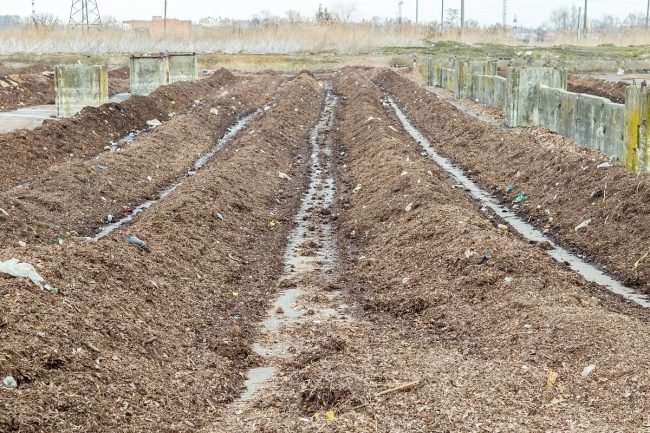Where Does Your Food Waste Go?
Composting is a win-win because not only does it prevent food products from winding up in landfills, it delivers vital nutrients to the soil in your community. Composting also reduces the need for synthetic fertilizers, cuts methane emissions from landfills, lowers the resources needed for irrigation by helping soil retain moisture…lots of wins going on!
After we pick up your food waste, the process of breaking it down into compost happens primarily at commercial composting facilities. Let’s take a look at what those are and how they work…
Commercial Composting Facilities: Large-Scale Food Waste Recycling
Also known as industrial composting, commercial composting facilities are large operations that can typically handle many different kinds of organic material and generate several different varieties of compost in high volumes. They may be equipped to serve industries such as wastewater facilities and lumber producers, in addition to customers such as restaurants, hospitals, and schools.
These large facilities have industrialized the process of composting to streamline it and scale it. Once they have sorted the waste and removed any non-compostable materials, they may use one or more of the following composting methods, depending on their capabilities:
Windrow Composting
This form of composting gets its name from piling organic waste in long rows, although the exact method can vary significantly depending on the operator.
In many operations a large tractor called a turner is driven slowly over each row to mix the contents, which can reach up to 140 degrees inside the pile. Turning every three days to weekly, the active portion of windrow composting food waste takes about six months.
Large-scale industrial composting requires planning, skill, and good fortune. Most facilities are located far from city centers, where land costs and distance from neighbors reduces headaches.
In-Vessel Composting
Instead of composting in the open air, a commercial facility may move the food waste into a plastic or metal tank, drum, or silo. There it can be composted under carefully controlled conditions of air flow, temperature, and moisture without creating nuisance odors.
Using this technique, compost can be ready for cooling in just a few weeks.
Aerated Static Pile
This method combines the pile structure of windrows with the piped-in air of composting vessels, while removing the need for turning. Loosely piled bulking agents such as shredded newspaper and wood chips are added to the pile to help facilitate air flow.
Although this method doesn’t work well with animal byproducts or grease, it is excellent for composting food scraps and can do so within three to six months.
Where Does the Compost Go?
Food waste that goes to a commercial facility and is transformed into compost may end up at a farm, nursery, or community garden, or be sold to the general public for private use.
Or, if you choose, your compost can go to you! Twice per year we can deliver whatever compost your donations have earned you over the course of the year for your own use.





